Natural Homemade Pesticide for Weed: A Eco-Friendly Solution To Fight Off Pests
If you are growing cannabis plants, you may encounter some common pests that can damage your crops and reduce your yield. These pests include aphids, spider mites, whiteflies, caterpillars, fungus gnats, and more. While there are many chemical pesticides available in the market, they can be harmful to your health, the environment, and the quality of your cannabis. That’s why many growers prefer to use natural homemade pesticides that are safe, effective, and easy to make.
The Power and the Benefits of Organic Pest Solutions
Using a natural homemade pesticide for weed has many benefits over synthetic ones. Some of these benefits are:
- They are cheaper and more accessible than commercial products: You can use ingredients that you already have in your kitchen or garden, such as garlic, vinegar, neem oil, baking soda, etc.
- They are safer for you, your plants, and the ecosystem: They do not contain toxic chemicals that can harm your respiratory system, skin, eyes, or internal organs. They also do not leave residues that can contaminate your soil, water, or air.
- They are more effective and selective than synthetic ones: They target specific pests without harming beneficial bugs or microorganisms that help your plants grow. They also do not cause pest resistance or immunity, which can make them harder to control in the future.
9 Easy-to-Make Organic Insecticides for Weed Plants: Mixing Instructions Application
There are many recipes for natural homemade bug spray for plants that you can try. Here are some of the most popular ones:
1. Neem Oil Spray
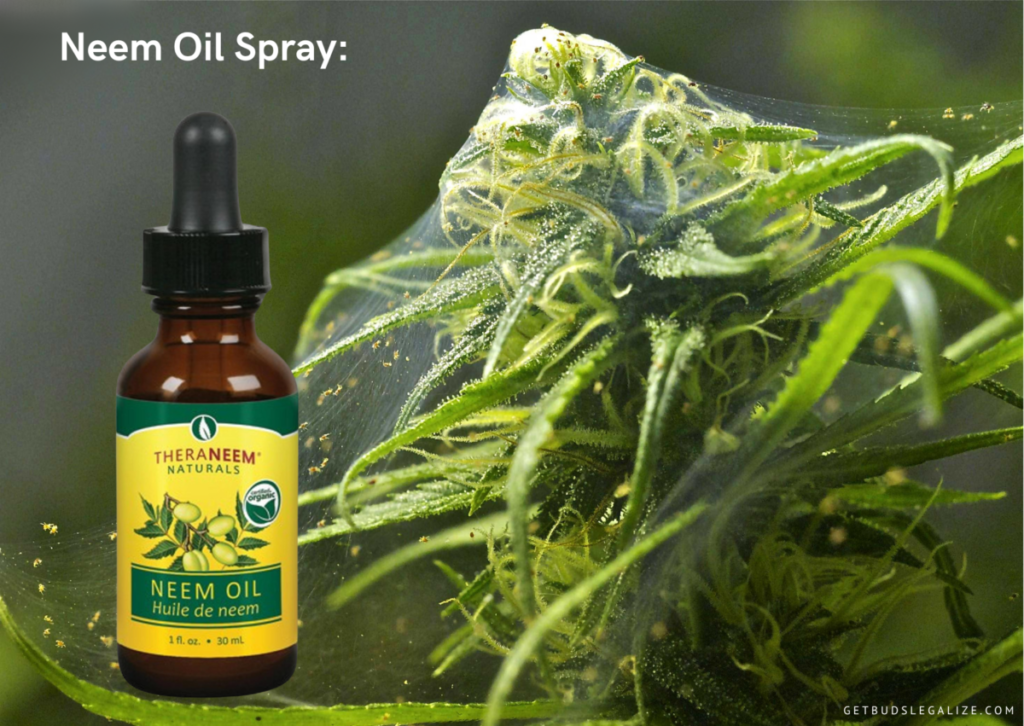
One of the best natural pesticides you can make at home is neem oil spray. Neem oil is extracted from the seeds of the neem tree, a native plant of Southeast Asia. It has been used for centuries as a natural insecticide, fungicide, and repellent. It’s effective at killing bugs such as aphids, spider mites, whiteflies, caterpillars, and fungus gnats; and prevents fungal infections such as powdery mildew and root rot.
Advantages:
- It’s safe for humans, animals, and beneficial bugs such as bees and ladybugs. It does not harm the environment or contaminate the soil or water.
- It’s safe and easy to make and use.
- It’s safe inexpensive and lasts for a long time. You can store it in a cool and dark place for up to a year.
How to make it:
To make a Neem oil spray, you will need:
- 1 liter of water
- 1 teaspoon of pure neem oil
- 1/4 teaspoon of liquid soap or detergent
- A spray bottle
Preparation method:
- Boil the water.
- Add the neem oil and the soap or detergent to the water and mix well.
- Pour the mixture into the spray bottle and shake well before use.
How to use it on your plants:
- Spray your weed plants with neem oil spray once a week or whenever you notice signs of pests or diseases.
- Spray both the top and bottom of the leaves and the stems.
- Avoid spraying during the flowering stage or when the buds are forming, as it may affect the taste and quality of your weed.
- Do not spray in direct sunlight or when the temperature is above 32°C (90°F), as it may burn your plants.
2. Garlic Spray
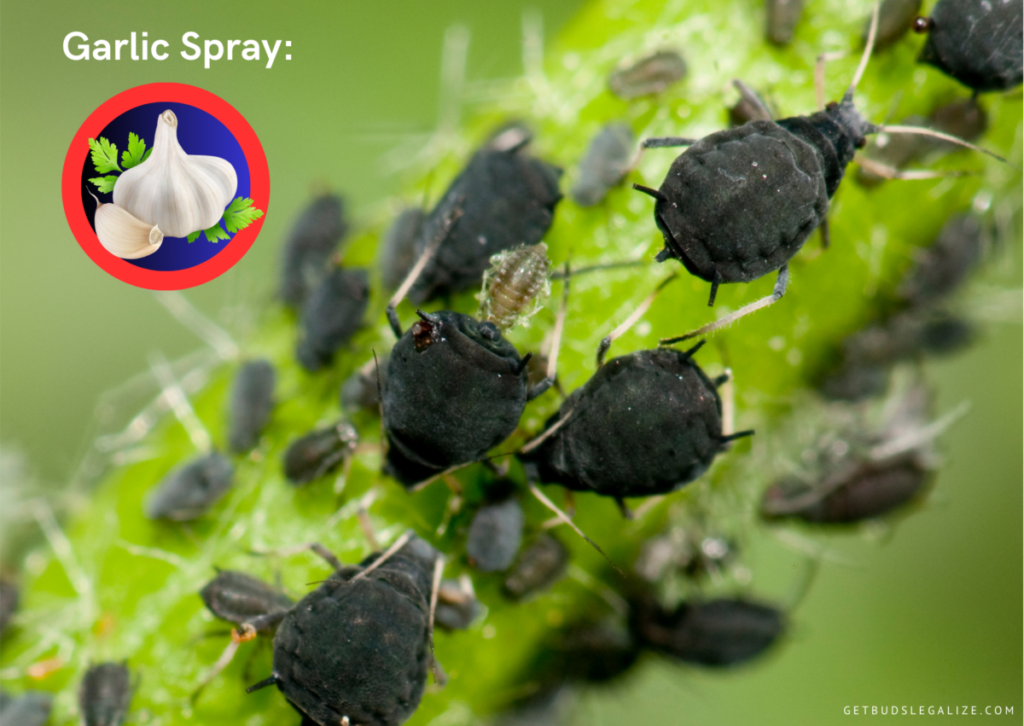
One of the best natural pesticides for marijuana plants is garlic. Garlic has been used for centuries as a natural remedy for various ailments and a deterrent for insects and animals. Garlic contains sulfur compounds that are toxic to many pests, but not to beneficial bugs like ladybugs. Ladybugs are natural predators of aphids and other soft-bodied insects, and they can help you control the pest population in your garden.
Advantages:
Garlic has many advantages as a natural pesticide for marijuana plants. It is readily available, inexpensive, and easy to grow. It also has antibacterial and antifungal properties that can prevent diseases and infections in your plants. Moreover, garlic does not leave any harmful residues on your buds, unlike some chemical pesticides that can affect the taste, smell, and potency of your cannabis.
How to make it:
To make a garlic pesticide for cannabis, you will need the following ingredients:
- 10 cloves of garlic
- 1 liter of water
- 1 teaspoon of liquid soap
- A blender
- A spray bottle
Preparation method:
- Peel and finely chop the garlic cloves.
- Put them in a blender with a little water and blend until you get a smooth cream.
- Strain the mixture through a cheesecloth or a fine sieve to remove any solids.
- Add the liquid soap to the garlic water and mix well.
- Pour the solution into a spray bottle and label it.
How to use it on your plants:
- Shake the bottle well before each use.
- Spray the solution on the leaves and stems of your cannabis plants, especially on the undersides where pests tend to hide.
- Repeat the application every few days or after rain or watering.
- Avoid spraying during the hottest hours of the day or when the sun is directly shining on your plants, as this can cause burns or damage.
- Store the solution in a cool and dark place for up to a week.
3. Tomato Leaves Spray

Tomatoes are not only delicious fruits that you can enjoy in salads and sauces, but they are also powerful allies in your cannabis garden. They belong to the same family as cannabis (Solanaceae), and they produce natural compounds called alkaloids that can deter or kill many cannabis pests, especially aphids. Aphids are small sucking insects that can infest your marijuana plants and suck the sap from their leaves and stems. They can also transmit viruses and attract other pests like ants.
Advantages:
Tomato leaf spray is a natural and eco-friendly way to eliminate aphids on your plants. It is easy and cheap to make with ingredients that you may already have in your garden or kitchen; and it is safe for humans, animals, and beneficial bugs like bees and ladybugs.
How to make it:
To make the Tomato leaf spray, you will need:
- A handful of leaves of tomato
- 2 cups of water
- A blender
- A strainer
- A spray bottle
Preparation method:
- Wash the leaves of the tomato and chop them into small pieces.
- Put them in a blender with water and blend until smooth.
- Strain the mixture through a cheesecloth or a fine sieve to remove the solids.
- Pour the liquid into a spray bottle and store it in the fridge.
How to use it on your plants:
- Shake the bottle well before use.
- Spray the affected areas of your plants with a once-a-week until the aphids are gone.
- Avoid spraying during hot or sunny days as it may cause leaf burn.
- Wash your hands after handling the solution as they may cause skin irritation.
4. Essential Oils Spray
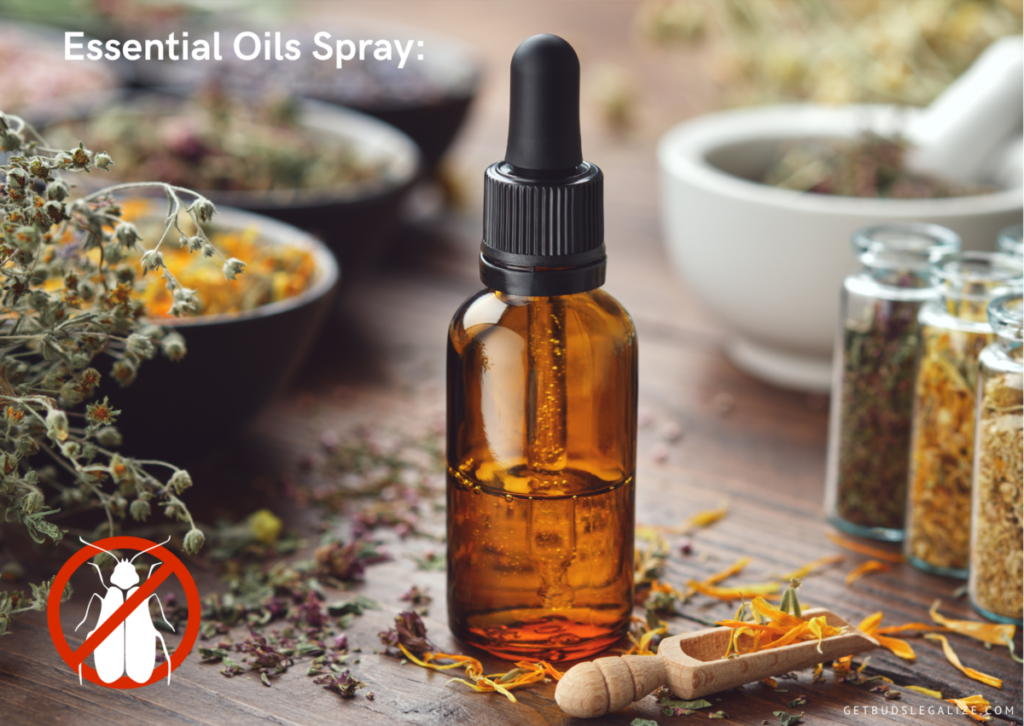
Essential oils are concentrated extracts from plants that have various properties and benefits. Some of them are effective at repelling or killing pests by disrupting their nervous system, interfering with their pheromones, or masking their food sources. Some of the best to use for pest control are peppermint, cedarwood, citronella, tea tree, and eucalyptus.
Advantages:
- Are natural and biodegradable, so they do not harm the environment or your health.
- Easy to use and apply, you just need to dilute them with water or alcohol and spray them on your plants or soil.
- Are versatile and can be used for different types of pests. You can also mix and match them to create your own blend.
How to make it:
To make your own essential oil pesticide, you will need:
- A spray bottle
- Water or rubbing alcohol
- Essential oil of your choice
The general ratio is 10 drops of essential oil per 1 cup of water or alcohol. You can adjust the amount depending on the severity of the infestation and the type of oil you use. For example, peppermint oil is very potent and may burn your plants if used too much. You can add a few drops of dish soap to help the oil stick to the plant’s surface.
How to use it on your plants:
- Shake the spray bottle well before each use.
- Spray the solution on your plants, especially on the underside of the leaves where pests tend to hide. Avoid spraying on flowers or buds as it may affect their flavor or potency.
- Repeat every few days or as needed until the pests are gone.
- Store the solution in a cool and dark place away from direct sunlight.
5. Turmeric Spray
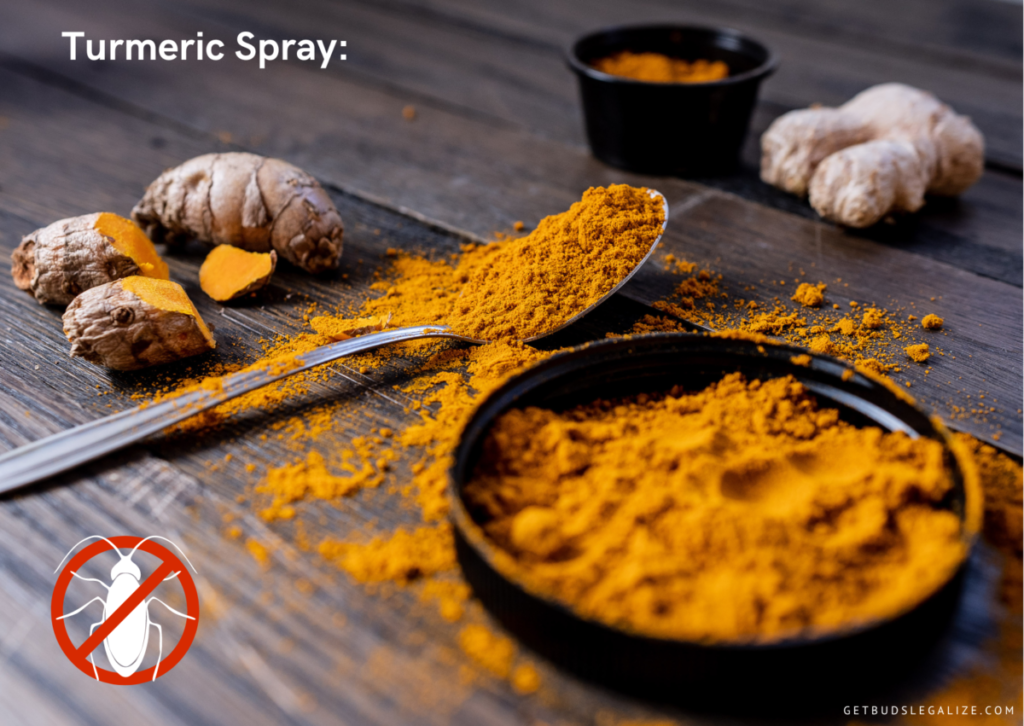
If you are looking for a natural and eco-friendly way to protect your marijuana plants from pests, you might want to consider using turmeric as a homemade pesticide. Turmeric is a spice with many health benefits, but it is also effective at killing bugs and preventing fungal infections in your plants.
Advantages:
Some of the advantages of using turmeric as a homemade pesticide are:
- It is cheap and easy to find in most grocery stores or online.
- It is safe for humans, animals, and the environment, unlike some synthetic pesticides that can harm beneficial bugs, pollute the soil and water, or cause health problems for consumers.
- It has anti-inflammatory, antibacterial, and antifungal properties that can help your plants heal from pest damage and prevent diseases.
- It has a pleasant smell and color that can enhance the appearance of your garden.
How to make it:
To make your own turmeric pesticide, you will need:
- 20 grams of turmeric powder
- 1 liter of water
- A spray bottle
Preparation method:
- Mix the turmeric powder with the water in a large container and stir well until dissolved.
- Pour the solution obtained into a spray bottle and shake well before each use.
How to use it on your plants:
- Spray your plants with the turmeric solution once a week or as needed, covering all parts of the plant, especially the undersides of the leaves where pests tend to hide.
- Avoid spraying during the hottest hours of the day or when the sun directly shines on your plants, as this can cause leaf burn.
- Reapply after rain or watering, as the solution can wash off easily.
- Store the unused solution in a cool and dark place for up to a month.
6. Insecticidal Soap Spray
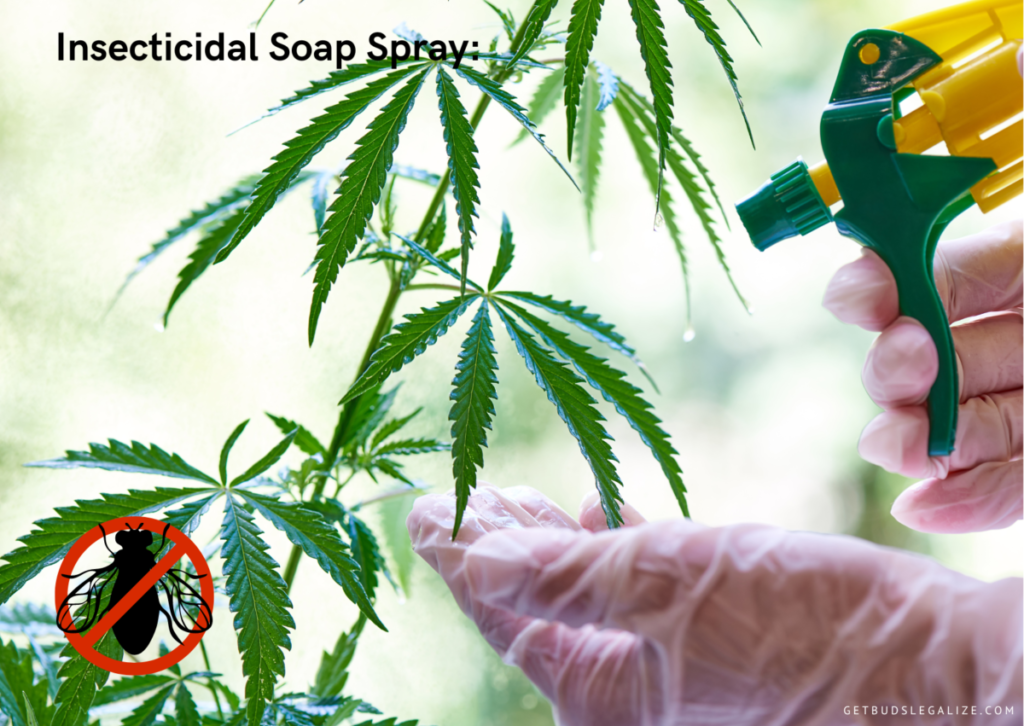
Insecticidal soap is a simple and effective way to kill soft-bodied insects such as aphids, mealybugs, spider mites, and whiteflies. It works by disrupting the cell membranes of the pests, causing them to dehydrate and die.
Advantages:
- It’s safe for humans, pets, and beneficial bugs such as bees and ladybugs.
- It’s cheap and easy to make at home with common ingredients.
- It does not leave any harmful residues on the plants or the soil.
How to make it:
To make insecticidal soap, you will need:
- 1 teaspoon of mild liquid soap (such as castile soap or dish soap),
- 1 liter of water
- A spray bottle.
Preparation method:
- Mix 1 tablespoon of soap with 1 quart of water in the spray bottle. Shake well to combine.
- You can also add some optional ingredients to enhance the effectiveness of the insecticidal soap, such as:
- A few drops of neem oil or vegetable oil help the soap stick to the pests and plants.
- A teaspoon of baking soda raises the pH of the solution and makes it more lethal to some insects.
- A teaspoon of vinegar lowers the pH of the solution and makes it more lethal to some insects.
How to use it on your plants:
- Spray the insecticidal soap directly on the affected parts of the plants, making sure to cover both sides of the leaves and stems. Avoid spraying on flowers or buds, as they may be damaged by the soap.
- Apply the insecticidal soap early in the morning or late in the evening, when the sun is not too strong. Avoid spraying on hot or windy days, as this may cause the plants to burn or dry out.
- Repeat the application every 7 to 10 days, or as needed, until the pests are gone. Rinse off the plants with water after a few hours to prevent any buildup of soap residue.
7. Diatomaceous Earth or Silica Gel
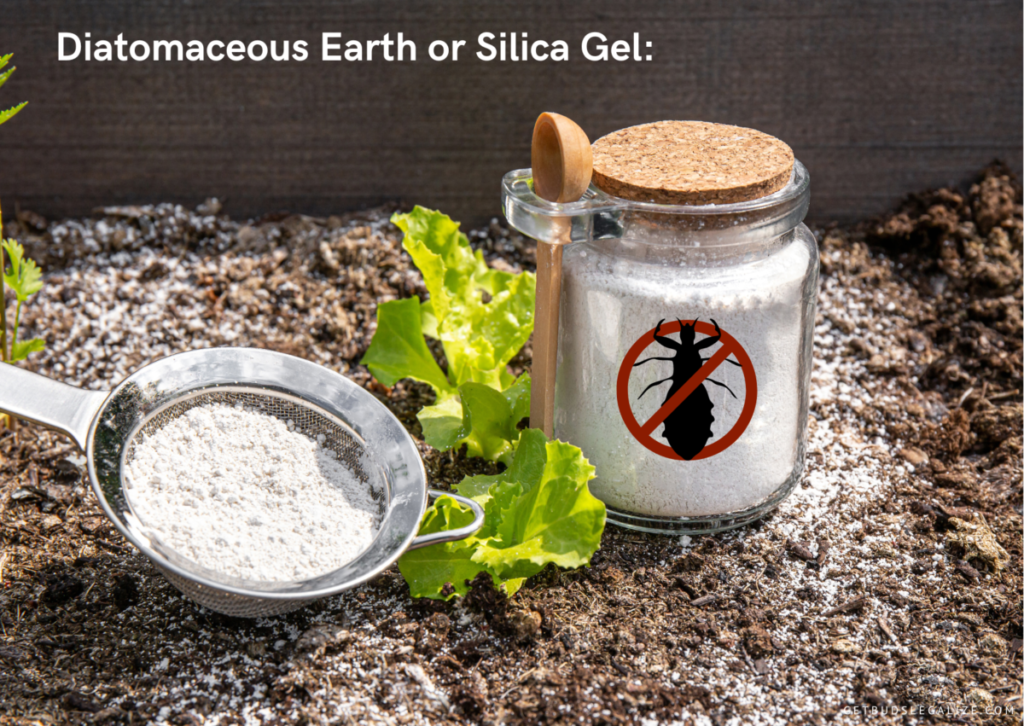
Diatomaceous earth (DE) and silica gel are both natural substances that can be used as pesticides for marijuana plants. They are made of tiny fossilized algae and silica crystals, respectively, with sharp edges that cut and dehydrate the insects that come into contact with them. They are effective against a variety of pests, such as aphids, spider mites, whiteflies, fungus gnats, and thrips.
Advantages:
One of the main advantages of using DE or silica gel as pesticides is that they are non-toxic to humans, animals, and plants. They do not leave any harmful residues or affect the taste or quality of the cannabis buds. They are also easy to apply and inexpensive to buy.
How to get it:
You can buy DE or silica gel from gardening stores or online. Make sure you get the food-grade DE or the non-indicating silica gel, which is safe to use around plants. Avoid the pool-grade DE or the indicating silica gel, which contains chemicals that can harm your plants.
How to use it on your plants:
To use DE or silica gel as a pesticide, you must wear a mask and gloves to avoid inhaling or touching the fine dust. Then, you can sprinkle them lightly over the soil and the leaves of your marijuana plants. You can also mix them with water and spray them on your plants. You need to reapply them after watering or rain, as they lose their effectiveness when wet.
8. Vinegar Spray
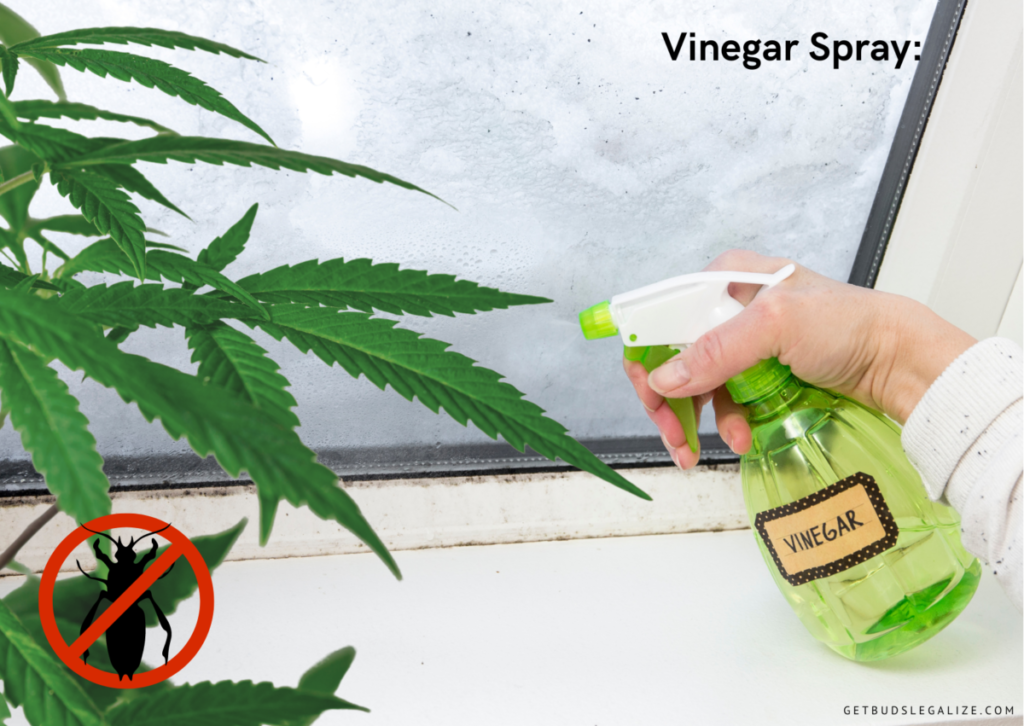
Vinegar spray is a simple and effective homemade pesticide that can help you get rid of aphids, spider mites, whiteflies, and other pests on your plants. Vinegar is acidic and can disrupt the pH balance of the pests, making them more vulnerable to diseases and predators. Vinegar spray also has fungicidal properties that can prevent fungal infections in your plants.
Advantages:
- It’s cheap and easy to make with common household ingredients.
- It’s safe for humans, pets, and beneficial insects, as long as you dilute it properly and avoid contact with the eyes and skin.
- It can also be used to clean your gardening tools and pots, as it can remove dirt, grease, and rust.
How to make it:
To make vinegar spray, you will need:
- White vinegar (preferably organic)
- Water
- Spray bottle
The ratio of vinegar to water depends on the severity of the pest infestation and the sensitivity of your plants. A general rule of thumb is to use one part vinegar to three parts water for mild cases, and one part vinegar to one part water for severe cases. You can add a few drops of dish soap or vegetable oil to help the spray stick to the plant leaves.
How to use it on your plants:
Before applying vinegar spray, you should test it on a small area of your plant to see how it reacts. If you notice any signs of damage or stress, such as wilting, browning, or curling, you should dilute the spray more or avoid using it altogether. You should also avoid spraying vinegar on flowers or buds, as it may affect their flavor and potency.
To use it correctly, simply shake the bottle well and spray it on the affected areas of your plant, covering both the top and bottom of the leaves. Apply it in the early morning or evening, when the sun is not too strong, to prevent burning your plants. You should also avoid spraying vinegar when it is raining or windy, as it may wash off or drift away.
Repeat the application every few days until you see no signs of pests on your plants. You can also use vinegar spray as a preventive measure by spraying it once a week during the growing season.
9. Baking Soda Spray
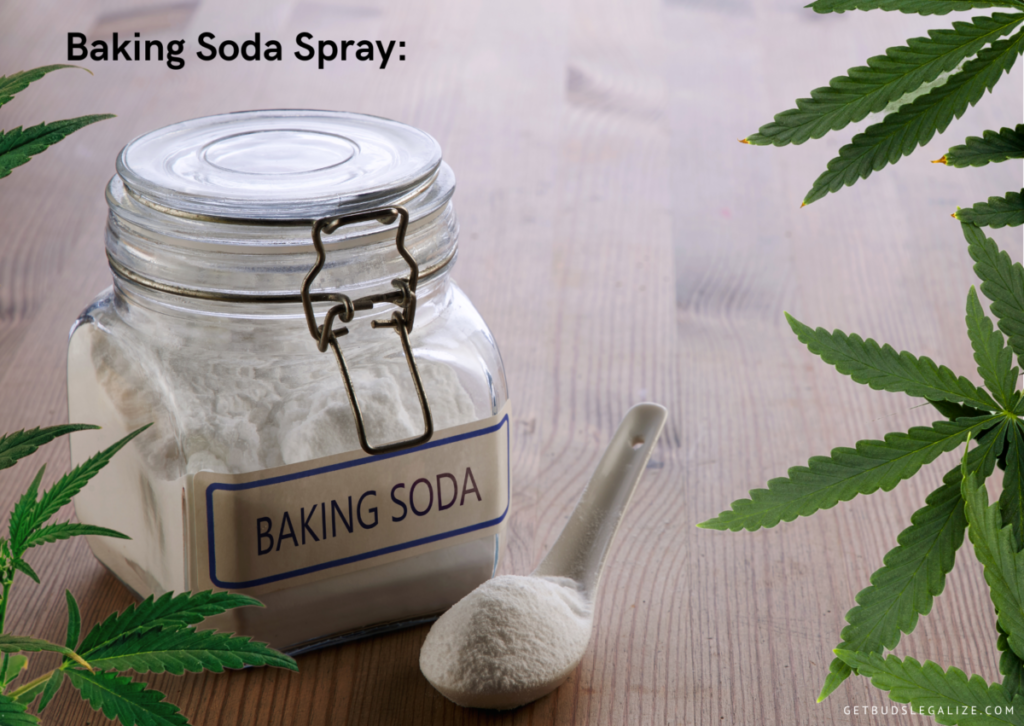
Baking soda spray is a natural and eco-friendly way to prevent fungal infections and pests on your marijuana plants. It’s cheap, easy to make, and can help control powdery mildew, botrytis, and spider mites.
How to make it:
To make baking soda spray, you will need:
- 1 tablespoon of baking soda
- 1 quart of water
- A few drops of liquid soap or vegetable oil (optional)
Mix the baking soda and water in a spray bottle. Add a few drops of soap or oil if you want to increase the effectiveness and adhesion of the spray. Shake well before using.
How to use it on your plants:
- Spray the baking soda solution on the affected areas of your marijuana plants, making sure to cover both sides of the leaves.
- Repeat the application every few days until the problem is gone.
- Avoid spraying in direct sunlight or high temperatures, as this may cause leaf burn.
- Do not spray on flowering plants, as this may affect the taste and quality of your buds.
How to Keep Bugs Off Plants Without Pesticides: 4 Easy Tips
Keeping bugs off plants without pesticides is a challenge for many gardeners who want to grow healthy and organic crops. However, there are some natural and effective ways to prevent and control pest infestations in your cannabis growth without harming the environment or your health. Some of these methods include:
- Plant companion plants that repel insects. Some plants have natural chemicals that deter pests, such as marigolds, garlic, basil, mint, lavender, and rosemary. Planting these near your crops can help reduce insect damage.
- Use physical barriers to prevent insects from reaching your plants. You can cover your plants with row covers, netting, or cages to keep bugs away. You can also use sticky traps, insect screens, or copper tape to catch or repel insects.
- Attract beneficial bugs that prey on pests. Some insects are actually helpful for your garden, as they feed on the harmful ones. For example, ladybugs, lacewings, hoverflies, and parasitic wasps can control aphids, mealybugs, whiteflies, and caterpillars. You can attract these beneficial bugs by planting flowers that provide nectar and pollen, such as daisies, sunflowers, yarrow, and fennel.
- Practice good gardening hygiene and maintenance. Keeping your garden clean and healthy can prevent many pest problems. Remove any diseased or damaged plants, weeds, or debris that can harbor insects. Water your plants regularly and mulch them to retain moisture and prevent weeds. Rotate your crops every year to avoid soil-borne diseases and pests. Prune your plants to improve air circulation and sunlight penetration.
Conclusion
In this article, we have discussed how to make 9 natural pesticides for weed plants using common household ingredients. These pesticides are eco-friendly, cost-effective, and easy to apply. It can help you protect your organic garden from harmful insects and diseases without harming the environment or your health. We hope you find this information useful, and remember to always test a small area first before spraying the whole plant. Happy growing!
Homemade Pesticide for Weed - FAQs
Some of the best and most effective foliar sprays you can use in your organic cannabis garden are:
- Neem oil: This natural oil extracted from the neem tree has anti-fungal and insecticidal properties. It can help prevent and treat spider mites, as well as other pests and diseases. To use it on your plants, mix 1 teaspoon of neem oil with 1 quart of water and a few drops of mild soap. Spray the solution on the leaves every 7 to 10 days, preferably in the evening or early morning.
- Insecticidal soap: This is a simple and safe way to kill spider mites on contact. You can make your own by mixing 1 tablespoon of liquid soap with 1 quart of water. Spray the solution on the leaves every 2 to 3 days until you see no signs of mites.
- Organic miticides: These are products that contain natural ingredients that target spider mites specifically. Some examples are pyrethrin, azadirachtin, and rosemary oil. Follow the instructions on the label for how to use them on your plants.
Insecticides can be made from natural ingredients that are safe for humans and plants. Some common examples are:
- Soap spray: Mix 1 tablespoon of liquid soap with 1 quart of water and spray on affected plants.
- Neem oil: Mix 2 teaspoons of neem oil with 1 quart of water and spray on affected plants. Neem oil is a great natural insect repellent with fungicidal properties.
- Garlic spray: Crush 4 cloves of garlic and steep in 1 quart of water for a day. Strain and spray on affected plants. Garlic has antibacterial and antifungal properties and repels many insects.
Many gardeners use vinegar as a natural pesticide to repel insects and prevent diseases in their plants. Vinegar is acidic and can lower the pH of the soil, making it inhospitable for some pests. However, vinegar can also harm beneficial organisms and damage plant tissues if applied too much or too often. Therefore, it is advisable to use vinegar sparingly and only on specific plants that can tolerate it.
Using pesticides during flowering is not recommended as it can affect the quality and safety of your crops. Pesticides can leave residues on the flowers that can be harmful to humans and animals. If you have a pest problem during flowering, you should use natural or organic methods to control it, such as beneficial bugs, traps, or manual removal. You should also monitor your plants regularly and prevent pest infestations by maintaining good hygiene and ventilation in your growing area.
Flies can damage your weed plants by laying eggs, spreading diseases, and feeding on the leaves. To keep them off, you can try these methods:
- Use sticky traps to catch adult flies and prevent them from laying eggs.
- Spray your plants with neem oil or insecticidal soap to kill larvae and repel flies.
- Cover your plants with fine mesh or netting to block flies from accessing them.
- Grow companion plants that attract beneficial bugs or deter flies, such as basil, mint, lavender, or marigolds.
ILGM Plant Protector
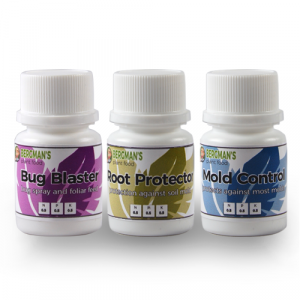
- Protect your cannabis from diseases and harmful pests.
- Contains three 20 ml bottles.
- Enough supplies to protect 20 plants.
- It can be used in soil, hydroponic, and all other growing mediums.
ILGM Fertilizer
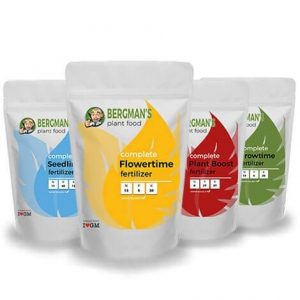
- From seedling to harvest, give your plants everything they need.
- Enough for feeding at least 5 plants.
- Discounted Package Deal
- Works well in soil, hydroponics, and other growing mediums.
- The best way to treat your plants




















